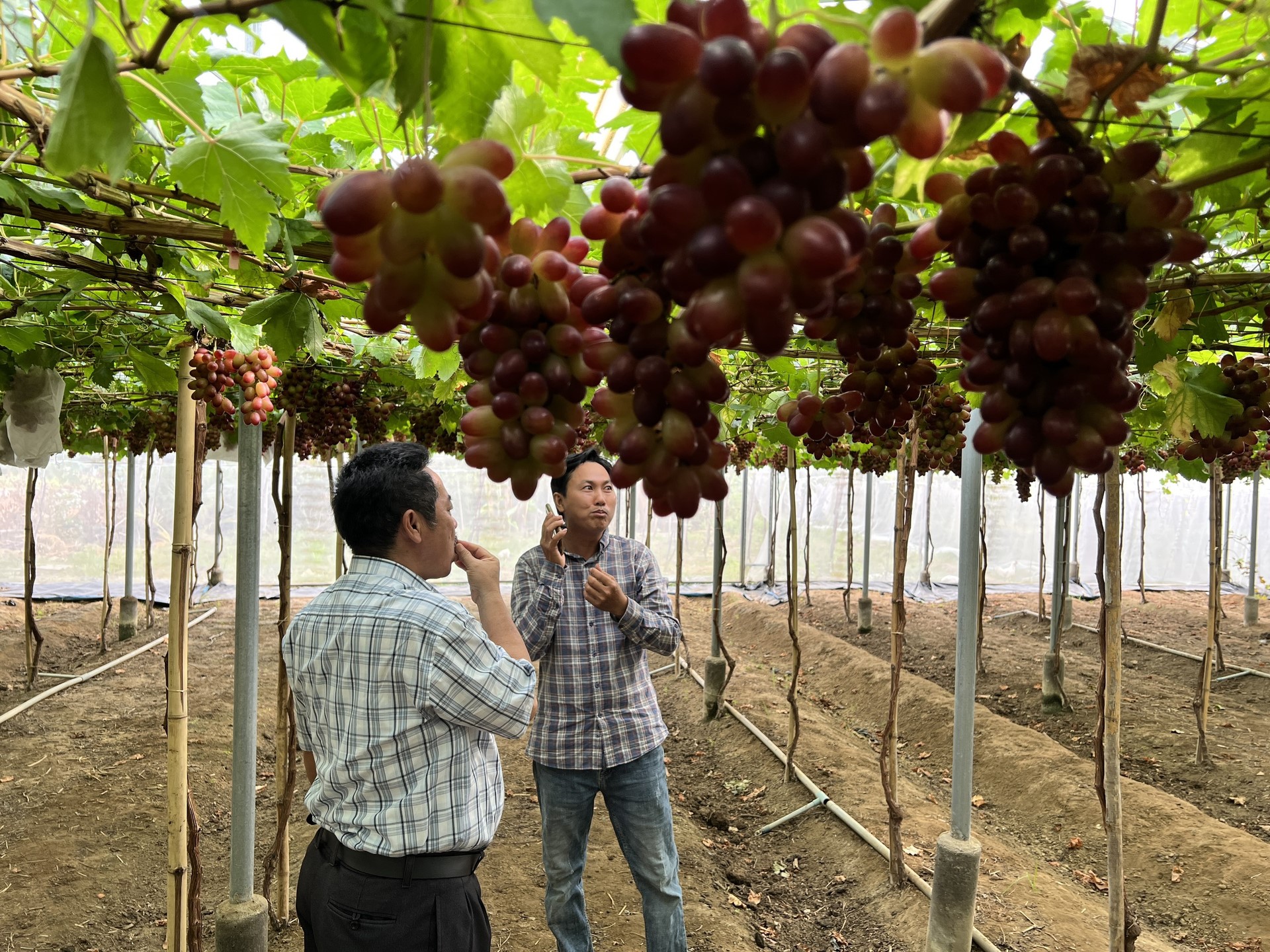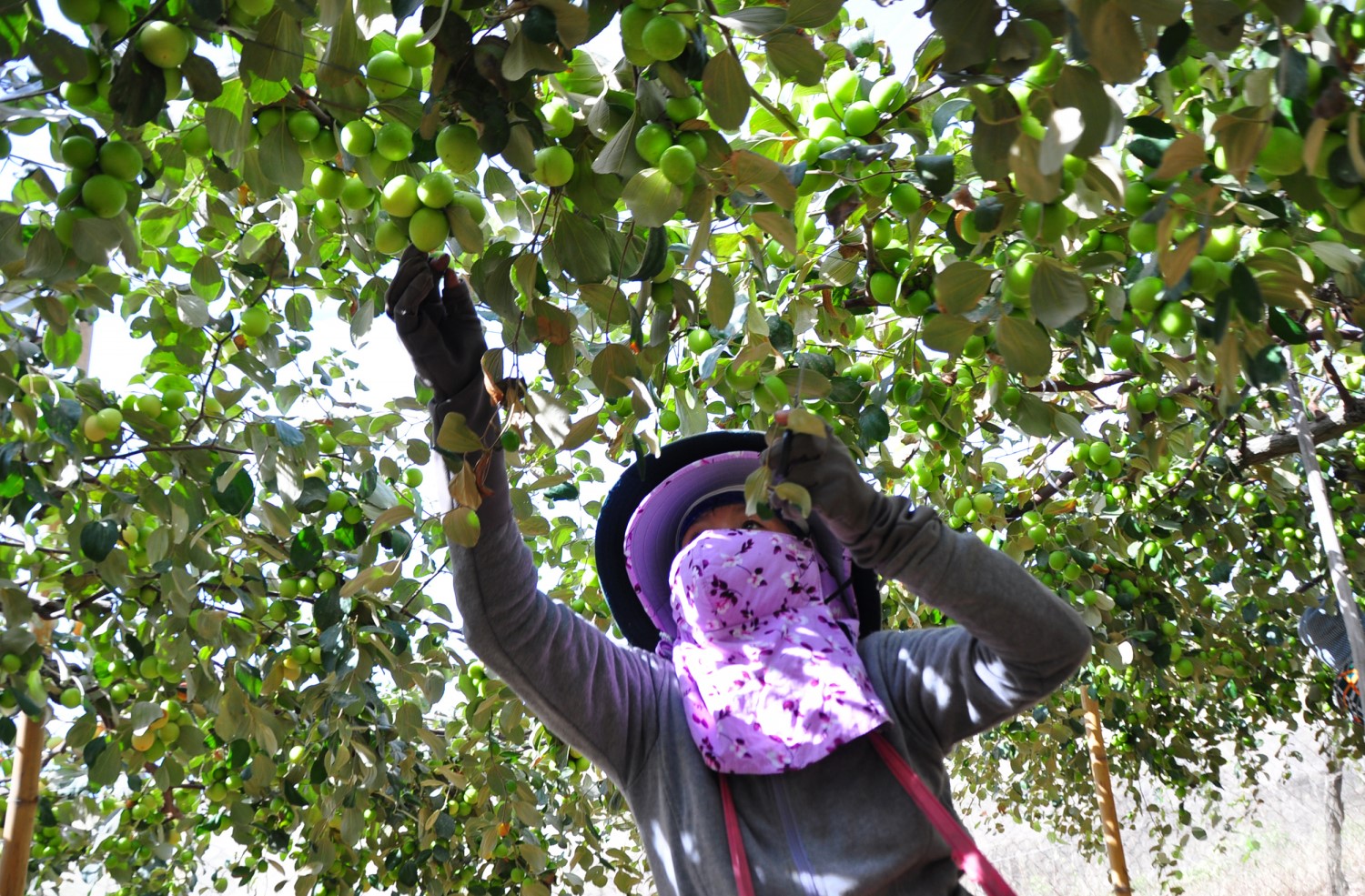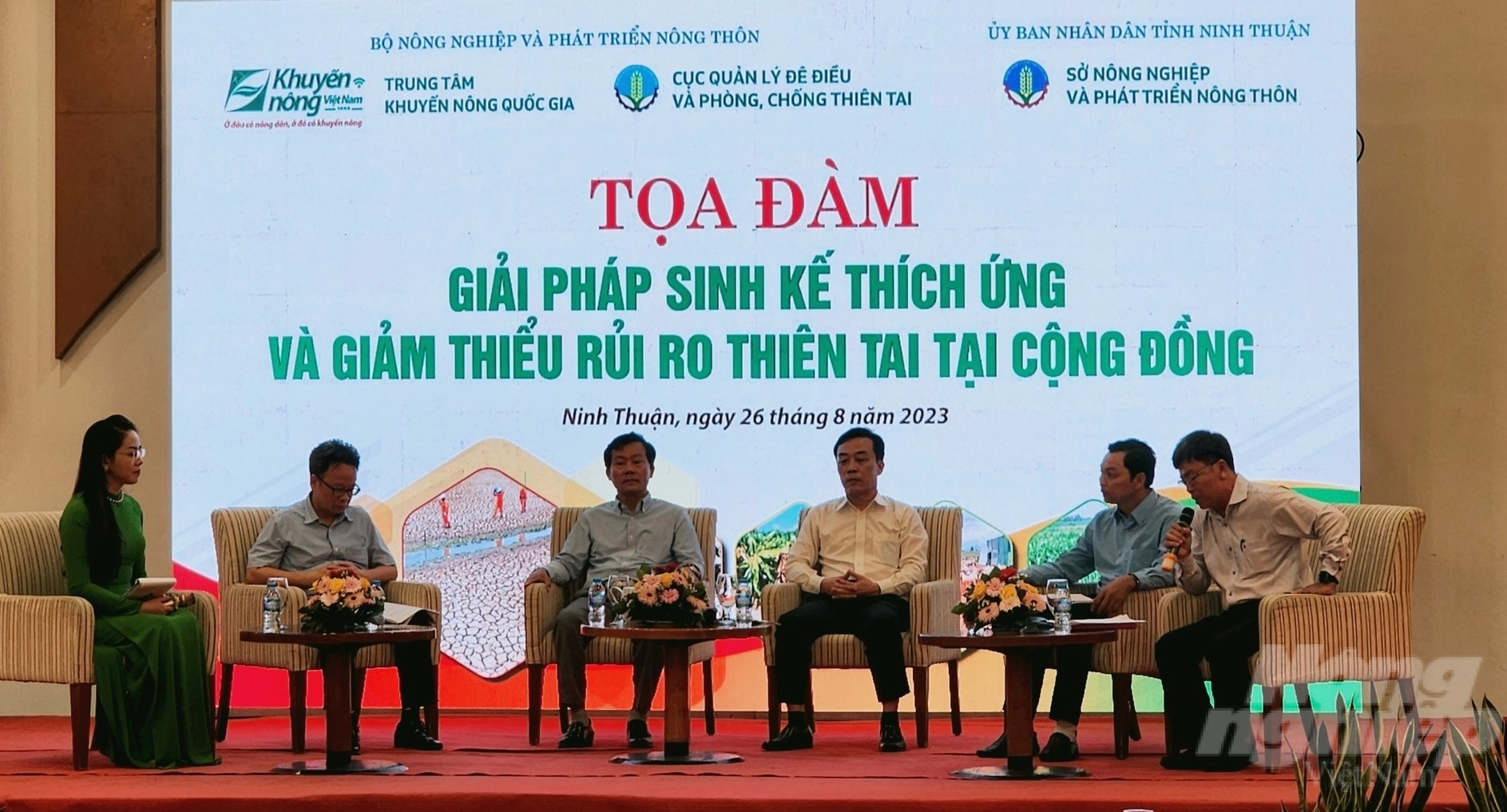November 27, 2025 | 16:06 GMT +7
November 27, 2025 | 16:06 GMT +7
Hotline: 0913.378.918
November 27, 2025 | 16:06 GMT +7
Hotline: 0913.378.918
On August 26, in Ninh Thuan, the National Agriculture Extension Center (NAEC) and the Department of Dike Management and Disaster Prevention and Control under the Ministry of Agriculture and Rural Development (MARD), in collaboration with the Ninh Thuan Department of Agriculture and Rural Development, held the seminar "Livelihood Solutions for Adaptation and Disaster Risk Reduction in the Community".

The seminar "Livelihood Solutions of Adaptation and Disaster Risk Reduction in the Community" took place in Ninh Thuan. Photo: Phuong Chi.
This program is part of the project “Promoting community awareness and community-based disaster risk management until 2030 (now known as Project 553) chaired by MARD. The project is a legal framework and generates the interest and response of many agencies, departments, and branches from central to local levels, as well as domestic and foreign organizations.
At the seminar, Mr. Nguyen Van Tien, Deputy Director of the Department of Dike Management and Disaster Prevention and Control, said that in recent years, natural disasters in our country have occurred consecutively with many anomalous factors, exceeding historical levels in many regions of the country. In particular, natural disasters have occurred more often in regions where they rarely occurred before, including the South Central Coast, causing a lot of losses to both life and property and seriously affecting the country's socio-economic development.
Mr. Nguyen Khac Tri, Deputy Director of the Ninh Thuan Department of Agriculture and Rural Development, said that Ninh Thuan is a province with an arid climate with over 2,700 hours of sunlight/year, while rainfall is only 700–800 mm/year. Drought occurs frequently in the province. In 2015 and 2016, Ninh Thuan experienced a very severe drought that lasted for a long time on a large scale, causing a shortage of domestic water and production water; cattle died due to a lack of food and water; many crop areas were damaged; some areas had to stop production; and people without production were starving. The total damage to crops and livestock due to the drought was estimated at more than VND 329 billion.

Grape is a crop that adapts very well to drought conditions and gives a very high income in Ninh Thuan. Photo: KS.
Besides, population growth and rapid socio-economic development, along with processes of urbanization and industrialization, development of infrastructure, and overexploitation of natural resources over the years, continue to increase natural disaster risks. Therefore, disaster risk reduction and climate change adaptation are among the most important and prioritized tasks.
However, the implementation of this task not only depends on functional forces and local authorities, but every citizen also needs to improve awareness, knowledge, and skills to effectively prevent and control natural disasters in place. It is the people who understand well the natural conditions, climate, and natural disasters in their living place and will take advantage of the accumulated experience and knowledge to contribute to reducing losses caused by natural disasters.
Raising public awareness is a form of non-structural investment with low cost but high efficiency in the work of natural disaster prevention and control. Therefore, this work should be carried out regularly and throughout the process of natural disaster prevention, response, and remediation. At the seminar, a number of solutions for natural disaster prevention, response, and remediation were given, including:

Apple is a very drought-tolerant crop, suitable for hot and sunny conditions, and gives a high income in Ninh Thuan. Photo: Kim So.
First, raise awareness and the role of socio-political organizations, especially heads of villages, hamlets, villages, and residential areas, in natural disaster prevention and control; proactively develop scenarios to respond to natural disasters; prepare material facilities and equipment and mobilize maximum in-place resources to effectively implement natural disaster prevention and control.
Second, the business community needs to actively build and protect their structures and material facilities and organize production and business to ensure uninterrupted operations when natural disasters occur. At the same time, performs social responsibility well; accompanies authorities, socio-political organizations, and other social organizations in implementing timely support policies for workers when production is temporarily suspended due to natural disasters.
Third, education units training in specialty and knowledge promote dissemination to change awareness among all levels and people, transforming from focusing on response to proactive disaster risk prevention and management. This is also the task of the specialized agency on agricultural extension: guiding and sharing information to improve the capacity of the grassroots agricultural extension system.
Fourth, improve the content and diversify forms of dissemination suitable to each stage of natural disaster prevention and control and suitable to the characteristics of each region and each community group, especially vulnerable subjects; educate and train to help the community acknowledge the role and meaning of prevention in reducing loss of life and property caused by natural disasters.

Experts discuss with businesses, cooperatives, and farmers measures to prevent and reduce disaster risks. Photo: Phuong Chi.
At the seminar, businesses, cooperatives, and farmers discussed with experts the types of natural disasters and prevention measures. Thereby, developing solutions to raise awareness of natural disasters and response capacity to natural disasters for the team working in natural disaster prevention and control, local government officials, officials of the agriculture sector, and people in the region frequently affected by natural disasters.
At the same time, build communities at commune and district levels that are safe from natural disasters and capable of adapting to climate change; form a culture of preventing and actively participating in natural disaster prevention and control among the majority of people in order to contribute to implementing the national criteria on building a new countryside, minimizing the loss of life, property, and the environment caused by natural disasters.
In addition, the experts also proposed solutions and orientations for the development of effective agricultural production models for climate change adaptation and disaster risk reduction for farmers.
At the seminar, Mr. Le Quoc Thanh, Director of the National Agriculture Extension Center, said: At the seminar, Mr. Le Quoc Thanh, Director of the National Agriculture Extension Center, said: The National Agriculture Extension Center will direct the agricultural extension system of provinces, including Ninh Thuan, to gather technologies and solutions that help production both adapt to climate change and avoid types of natural disasters.
In addition, Mr. Thanh also suggested that, in the coming time, the agriculture extension centers of provinces should be more active in technology transfer to respond to and adapt to climate change and create livelihoods for people. Especially, pay attention to technology transfer in high-risk areas to create social security solutions and livelihoods for disadvantaged people.
Translated by Huyen Vu Thu
/2025/11/26/4909-2-154329_878.jpg)
(VAN) Pearl grouper farming in HDPE cages not only delivers economic efficiency but also contributes to protecting the environment, creating jobs, and promoting marine-based experiential tourism.

(VAN) The model of making a living under the forest canopy through the agroforestry system in Van Son commune, Bac Ninh province, is expected to generate an annual income of approximately VND 30 million/ha.

(VAN) Many enterprises in Can Tho are harnessing natural energy and reducing greenhouse gas emissions in their production processes, thereby contributing to the promotion of a sustainable green transition.
/2025/11/24/3536-2-112800_176.jpg)
(VAN) Dong Nai now has tens of thousands of hectares of forests certified for sustainable management, and this area will continue to be expanded in the coming period.

(VAN) Vinh Ha hamlet (Dai Xuyen commune, Hanoi) is shifting away from small-scale farming as households adopt bioscurity into their breeder chicken models.

(VAN) Heavy rains make aquatic species more vulnerable to disease. Proactive water management and high-tech systems help farmers prevent outbreaks and protect yields.

(VAN) Greenhouses are shifting production mindsets in Binh Lu commune, enabling farmers to ‘weather the sun and rain’ and secure stable vegetable harvests throughout the year.